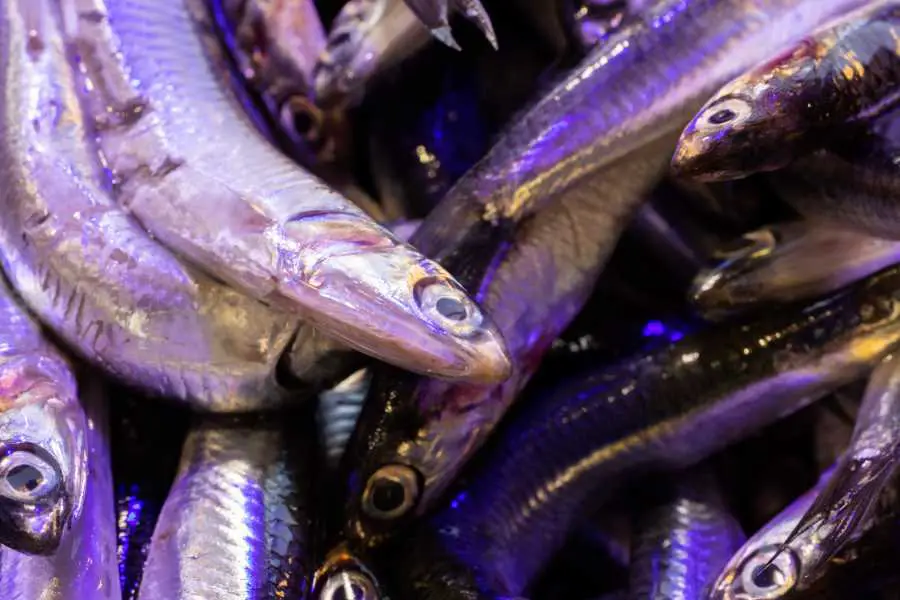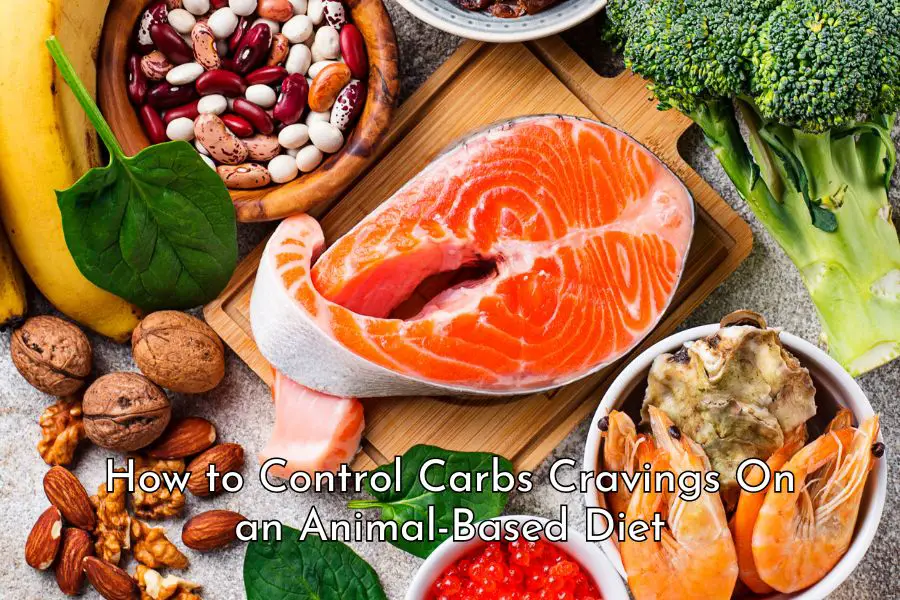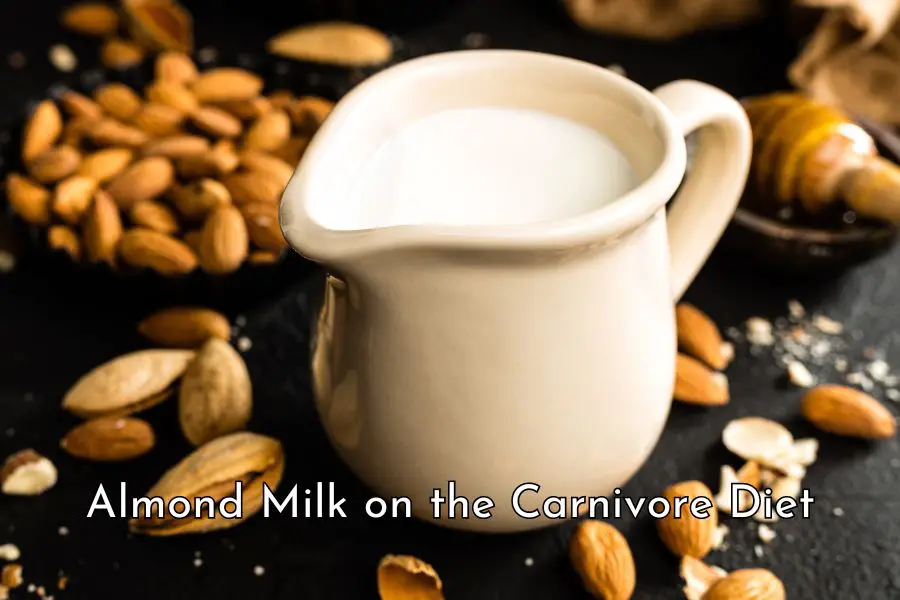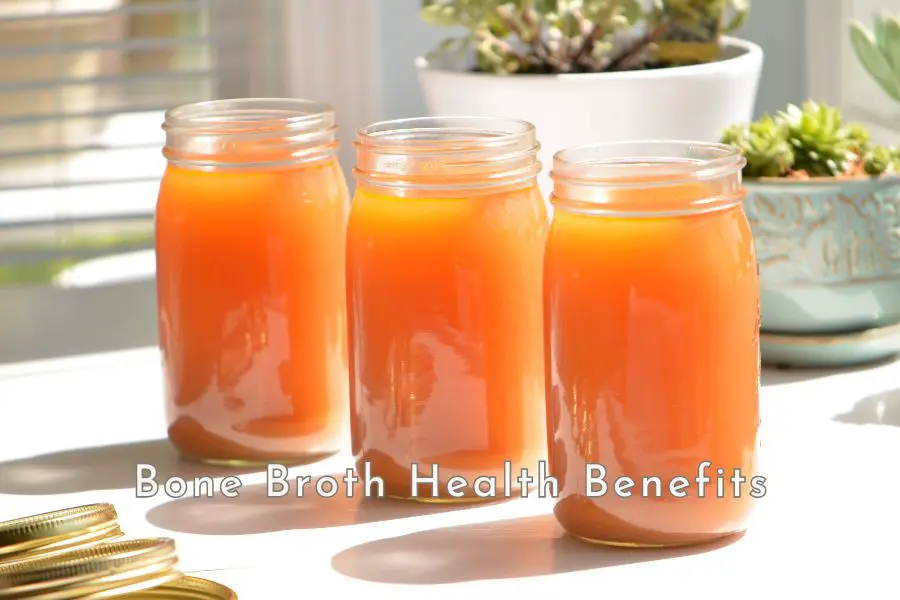Animal-based food is a quality source of omega-3 fatty acids and you can get enough omega-3s on the carnivore diet even when you don’t eat fish.
This post provides an extensive list of sources of omega-3s on the carnivore diet and recommends the best sources of these important nutrients.
Table of Contents
- What are omega-3 fatty acids?
- Why are omega-3 fatty acids so important?
- How much omega-3 fatty acids do you need?
- Animal sources vs plant sources of omega-3s
- Sources of omega-3s on the carnivore diet
- Best sources of omega-3s on the carnivore diet
What are omega-3 fatty acids?
Omega-3 fatty acids are a type of polyunsaturated fatty acids that are important for the healthy functioning of the human body but your body can’t make them on its own and must obtain them from dietary sources. [1]
There are several types of omega-3 fatty acids but the majority of scientific research focuses on three types: alpha-linolenic acid (ALA), eicosapentaenoic acid (EPA), and docosahexaenoic acid (DHA). [2]
ALA mainly comes from plant foods (e.g. flaxseeds, walnuts, hempseeds, linseeds, rapeseeds, and chia seeds) while EPA and DHA mainly come from animal sources (e.g. fish, seafood, meat, fat, organ meat, and eggs).
Why are omega-3 fatty acids so important?
Omega 3 fatty acids are critical for human health because they are an integral part of cell membranes throughout the human body. [3]
In addition to forming structures of cell membranes, omega 3s play an important role in forming signaling molecules and the functioning of your heart; lungs; blood vessels, nervous, immune, and endocrine systems; and inflammatory processes. [4]
They are important for eye, brain, heart, joint, and mental health, reproductive health, fetal development, and healthy aging. [5, 6, 7]
DHA is considered the most important omega-3 in the brain and the proper structure and functioning of the brain depend upon an adequate supply of this important omega-3 fatty acid. [8]
DHA can be found in abundance in the retina (eye), brain, testis, and sperm cells. [9
Insufficient intake of EPA and DHA (marine omega-3s) has been linked to a number of health problems including ADHD, autism, bipolar disorder, depression, and suicide risks. [10]
How much omega-3 fatty acids do you need?
The Institute of Medicine has not established recommended daily allowances for omega-3s due to insufficient data but has established adequate intake (AIs) for omega-3s.
The table below shows AIs for ALA only because the Institute of Medicine considers that only ALA is essential as it can be converted to other forms of omega-3s. [11]
However, the conversion rate of ALA to EPA and DHA is so poor that it is very difficult to get sufficient EPA and DHA by consuming ALA alone which is predominantly found in plant sources only (see further discussion below).
| Life Stage | Adequate Intake of ALA |
|---|---|
| Birth to 12 months* | 0.5 g |
| Children 1–3 years | 0.7 g |
| Children 4–8 years | 0.9 g |
| Boys 9–13 years | 1.2 g |
| Girls 9–13 years | 1.0 g |
| Teen boys 14–18 years | 1.6 g |
| Teen girls 14–18 years | 1.1 g |
| Men > 18 years | 1.6 g |
| Women > 18 years | 1.1 g |
| Pregnant teens and women | 1.4 g |
| Breastfeeding teens and women | 1.3 g |
Some health organizations have recommended a minimum EPA and DHA intake of 250-500mg a day for healthy adults. [12]
The Global Organization for EPA and DHA Omega-3s (GOED) established official GOED Intake Recommendations as follows: [13]
- 500 mg for the general healthy population to lower the risk of coronary heart disease
- 700-1000 mg for pregnant and lactating women. The optimal intake is 700mg/day of EPA and DHA. For prevention of coronary heart disease: 100mg/day of EPA and DHA
- > 1 g for additional health conditions (e.g. high blood pressure or triglycerides).
In summary, you should aim to get from around 500 mg to 1,000 mg of EPA and DHA per day from dietary sources.
However, it is important to note that the amount of omega-3s you are consuming is just as important as the ratio of omega-3 to omega-6 in your diet.
Because omega-3s (with anti-inflammatory properties) and omega-6s (with pro-inflammatory properties) are known to compete (for the desaturation enzymes) for absorption, the more omega-6s you consume, the more omega-3s you will need. [14]
Fortunately, on the carnivore diet with the elimination of seed oils and plant-based food, your intake of omega-6s is likely to be low (unless you eat a lot of fatty pork and chicken on a regular basis which can be high in omega-6s).
Therefore, your omega-3 requirement won’t need to be as high as when you are on a standard Western-style diet because whatever you consume will be better utilized by the body.
Animal sources vs plant sources of omega-3s
Animal-based food is a much better source of omega-3 fatty acids than plant-based food. This is because animal-sourced omega 3s are pre-formed and highly bioavailable whereas plant-sourced omega 3s need to be converted to EPA and DHA and the conversion rate is exceedingly poor.
As mentioned above, plant-based food is the main source of ALA. However, ALA is an inactive form and must be converted to EPA and DHA so that they can be used in the functions specified above.
However, humans have a very limited ability to convert ALA to beneficial EPA and DHA forms.
It is estimated that, in healthy adults, around 5% of ALA is converted to EPA and less than 1% of ALA is converted to DHA. [15, 16, 17]
A scoping review of omega-3 supplementations for vegans and vegetarians found that high-dose ALA supplements from flaxseed or echium seed oils did not increase EPA and DHA levels and some studies even showed reductions. [18]
Animal-based food (especially oily fish and animal brains) is the main source of EPA and DHA. EPA and DHA are typically not found in plant food except for in microalgae.
Both EPA and DHA are highly bioavailable and can be readily absorbed and utilized in their original forms without any conversion.
Sources of omega-3s on the carnivore diet
Below are sources of omega-3 on the carnivore diet divided into seven food groups: seafood, ruminant, pork, poultry, animal fat, dairy, and organ meat.
Note that different testing samples will give different results but these should give you a good indication of the omega-3 levels in those food groups.
1. Seafood
Seafood is a great source of omega-3s on the carnivore diet. With just a couple of servings of fatty fish a week in addition to fatty ruminant meat cuts, you will have no problem reaching the above recommended daily intakes.
| Nutrients per 100g | Omega 3 (mg) | Omega 6 (mg) | Omega 6: Omega 3 |
|---|---|---|---|
| Mackerel | 2,670 | 219 | 0.1 |
| Salmon | 2,506 | 982 | 0.4 |
| Herring | 1,729 | 130 | 0.1 |
| Sardine | 1,480 | 3,544 | 2.4 |
| Tuna | 1,298 | 53 | 0.0 |
| Shrimp | 540 | 28 | 0.1 |
2. Ruminant
Fatty ruminant meat cuts have a higher omega-3 content than leaner cuts. Ruminant meat (e.g. beef, lamb, goat, and bison) in general also has better omega-3 to omega-6 ratios.
If you don’t eat seafood, eating just fatty ruminant meats is still enough to get the daily recommended omega-3 intake.
For example, one pound of ribeye a day will deliver more than 1 gram of omega-3s.
| Nutrients per 100g | Omega 3 (mg) | Omega 6 (mg) | Omega 6: Omega 3 |
|---|---|---|---|
| Ground lamb | 420 | 1,360 | 3.2 |
| Ribeye steak | 240 | 510 | 2.1 |
| Tenderloin | 221 | 452 | 2.0 |
| New York Strip | 185 | 379 | 2.0 |
| Chuck steak | 91 | 347 | 3.8 |
| Lean lamb | 72 | 155 | 2.2 |
| Ground beef | 48 | 435 | 9.1 |
3. Pork
Fatty pork (especially pasture-raised pork) can be high in omega-3 fatty acids
However, its omega-6 to omega-3 ratio is generally not favorable and you will have to eat a lot of fat (i.e. consuming a lot of the inflammatory omega-6s) to increase your omega-3 intake if this is your goal.
| Nutrients per 100g | Omega 3 (mg) | Omega 6 (mg) | Omega 6: Omega 3 |
|---|---|---|---|
| Pork belly | 480 | 5,029 | 10.5 |
| Bacon | 213 | 4,497 | 21.1 |
| Ground pork | 70 | 1,670 | 23.9 |
| Lean pork | 54 | 1,271 | 23.5 |
4. Chicken
Chicken meat is low in omega-3s and has a high omega-6 to omega-3 ratio which is not desirable. Chicken is also not the best meat to eat on the carnivore diet.
| Nutrients per 100g | Omega 3 (mg) | Omega 6 (mg) | Omega 6: Omega 3 |
|---|---|---|---|
| Lean chicken | 100 | 750 | 7.5 |
| Chicken breast | 120 | 1,740 | 14.5 |
| Chicken thigh | 206 | 3,091 | 15.0 |
| Chicken wing | 200 | 2,950 | 14.8 |
| Ground chicken | 96 | 1,327 | 13.8 |
5. Animal fat
Animal fat is rich in omega-3s.
However, ruminant fats (beef and lamb) have a much better omega-6 to omega-3 ratio compared to those of pork and chicken.
Beef fat and lamb fat have very low omega-6 to omega-3 ratios which are very close to the 1:1 ratio that our ancestors are thought to have consumed. [19]
Conventional duck, chicken and pork fats’ omega-6 to omega-3 ratios are extremely high and far exceed the levels in our ancestors’ diet.
| Nutrients per 100g | Omega 3 (mg) | Omega 6 (mg) | Omega 6: Omega 3 |
|---|---|---|---|
| Beef fat | 1,070 | 1,490 | 1.4 |
| Lamb fat | 798 | 1,652 | 2.1 |
| Chicken fat | 1,000 | 19,503 | 19.5 |
| Duck fat | 1,000 | 11,999 | 12.0 |
| Pork fat | 427 | 9,313 | 21.8 |
6. Dairy
Cheese and butter are decent sources of omega 3 and their omega 6 to omega 3 ratios are low compared to pork and poultry fat.
However, many people are sensitive to dairy products in general.
In addition, dairy has only become part of the human diet relatively recently. So my view is that, even if you can tolerate it well, do consume it in small quantities only.
| Nutrients per 100g | Omega 3 (mg) | Omega 6 (mg) | Omega 6: Omega 3 |
|---|---|---|---|
| Gouda | 394 | 263 | 0.7 |
| Mozzarella | 372 | 393 | 1.1 |
| Cheddar | 365 | 577 | 1.6 |
| Brie | 313 | 513 | 1.6 |
| Parmesan | 297 | 272 | 0.9 |
| Camembert | 274 | 450 | 1.6 |
| Feta | 265 | 326 | 1.2 |
| Butter | 315 | 2,728 | 8.7 |
7. Organ meat
As can be seen in the table below, animal brains are a great source of omega-3s.
This is no surprise given the critical role that omega-3s play in brain functions.
The level of omega-3s in some animal brains is even higher than in some seafood.
Other organ meat (heart, liver, kidney), although very nutrient-dense, doesn’t contain as much omega-3s.
| Nutrients per 100g | Omega 3 (mg) | Omega 6 (mg) | Omega 6: Omega 3 |
|---|---|---|---|
| Beef brain | 1,225 | 41 | 0.0 |
| Pork brain | 790 | 90 | 0.1 |
| Lamb brain | 620 | 30 | 0.0 |
| Lamb heart | 230 | 240 | 1.0 |
| Pork heart | 80 | 770 | 9.6 |
| Chicken heart | 70 | 1,910 | 27.3 |
| Beef heart | 11 | 407 | 37.0 |
| Beef liver | 7 | 318 | 45.4 |
| Lamb liver | 70 | 320 | 4.6 |
| Pork liver | 80 | 350 | 4.4 |
| Chicken liver | 6 | 486 | 81.0 |
| Beef kidney | 7 | 310 | 44.3 |
| Pork kidney | 10 | 170 | 17.0 |
| Lamb kidney | 190 | 210 | 1.1 |
Best sources of omega-3s on the carnivore diet
It is clear from the above data that the best sources of omega-3 on the carnivore diet are oily fish, ruminant fats, and animal brains.
These animal-based foods are both high in omega-3 fatty acids and have favorable omega-6 to omega-3 ratios.
| Nutrients per 100g | Omega 3 (mg) | Omega 6 (mg) | Omega 6 to Omega 3 |
|---|---|---|---|
| Mackerel | 2,670 | 219 | 0.1 |
| Salmon | 2,506 | 982 | 0.4 |
| Tuna | 1,298 | 53 | 0.0 |
| Beef brain | 1,225 | 41 | 0.0 |
| Beef fat | 1,070 | 1,490 | 1.4 |
| Lamb fat | 798 | 1,652 | 2.1 |
| Pork brain | 790 | 90 | 0.1 |
| Lamb brain | 620 | 30 | 0.0 |
| Beef tallow | 600 | 3,100 | 5.2 |
| Shrimp | 540 | 28 | 0.1 |
| Ground lamb | 420 | 1,360 | 3.2 |
However, given the poor aqua farming practice today, if you can’t get wild-caught fish, your best sources of omega-3s on the carnivore diet would be ruminant fats and animal brains.
For most people, this would mean eating fatty beef and lamb cuts and lamb brains (which are generally more accessible than other types of animal brains).
The concept of “like nourishes like” meaning “if you eat an organ of an animal, it will be beneficial for the corresponding organ in your body” might be true in this case.
If you want to improve or preserve brain health, have a serving of animal brains every now and then.
Other posts you might be interested in:
How Much Organ Meat Should You Eat on the Carnivore Diet?
What Is the Best Meat to Eat on the Carnivore Diet?
Carnivore Diet for Beginners: 15 Tips for Success
Is Carnivore the Best Anti-Aging Diet Around?
What Are the Best Ways to Cook Meat on the Carnivore Diet?
11 Common Carnivore Diet Mistakes
Disclaimer: The information in this post is for reference purposes only and is not intended to constitute or replace professional medical advice. Please consult a qualified medical professional before making any changes to your diet or lifestyle. Please check out our disclaimer for more detail.





